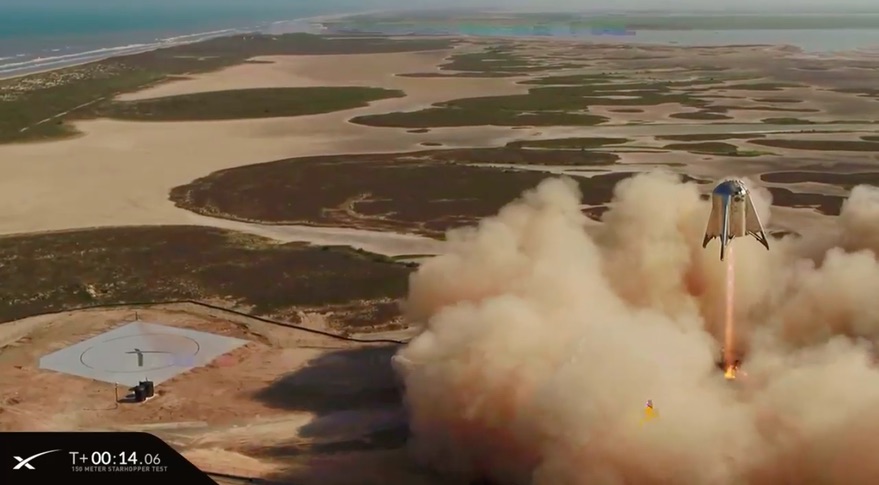
(Image Credit: SpaceX)
SpaceX is at it again, this time with a successful second ‘hop test’ of their Starhopper prototype craft. This rather glib name doesn’t do justice to the astonishing spectacle which was the completely perfect 57 second flight of their ‘water tower’ shaped demo craft. Using a single super powerful new Raptor engine, the craft lifted off to a height of 500′, then maneuvered smoothly sideways another 150′ using almost entirely the thrust vector from that single engine as it was precisely adjusted and pivoted. During this entire portion of the flight, a beautiful mach diamond in the supersonic exhaust plume is visible coming from the engine – be sure to watch the embedded video below. As a finale, in a move we have come to expect from them, Starhopper touched down gently on a nearby landing pad, precisely in the middle of the tidy target area.
What’s the big deal, you may ask? This flight:
- Demonstrated the thrust vector control capability of the Raptor engine
- Was the first significant flight of a liquid methane powered rocket
- Continued to diminish fears of launch failures through its perfection
- Brought attention of politicians, who are taking notice of the money this work brings to districts
- Further encouraged NASA to issue notices that upcoming flights should not be entirely reliant on the SLS.
Perhaps the most exciting part of all this, however, is the extremely strong step this test takes on the path to Mars. The Starship program of SpaceX is their bid to affordably transport tons and tons of material to the Red Planet, and eventually humans as well. The incredible success they have had developing this new technology from whole cloth, on a razor thin budget and on timetables that boggle the mind of ‘old space’ gives us all reason to hope that they (he) may actually be able to pull it off! And on a timescale that the author may actually get to see.
References:
